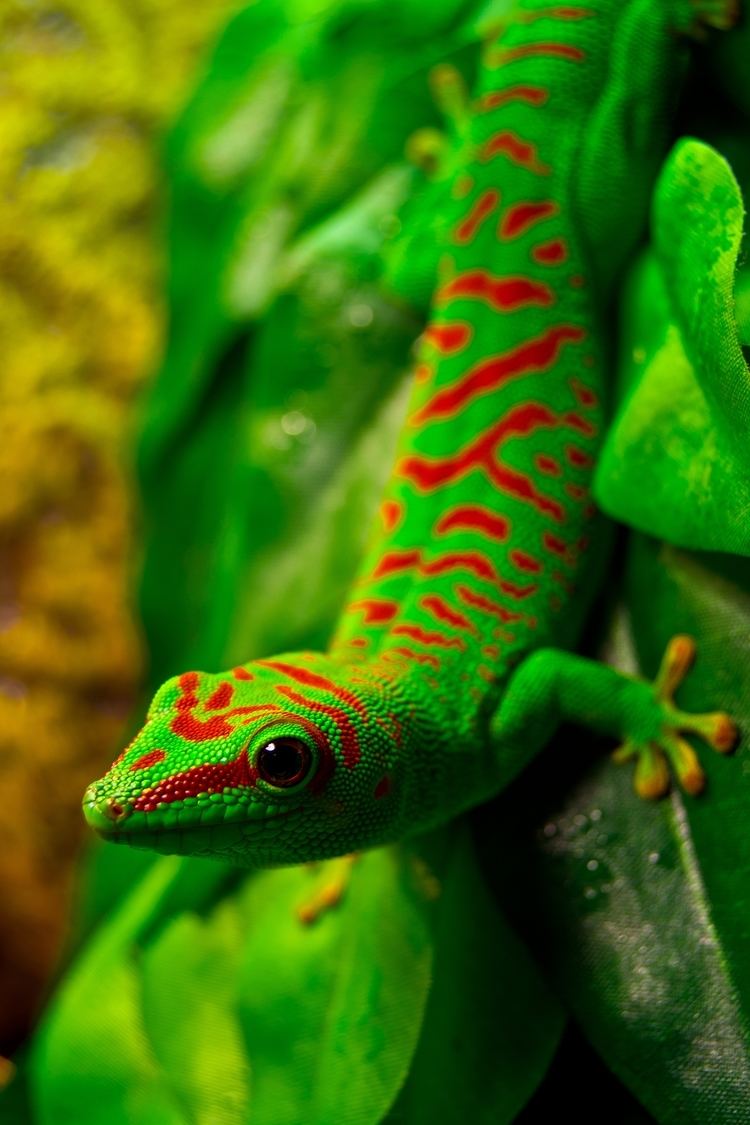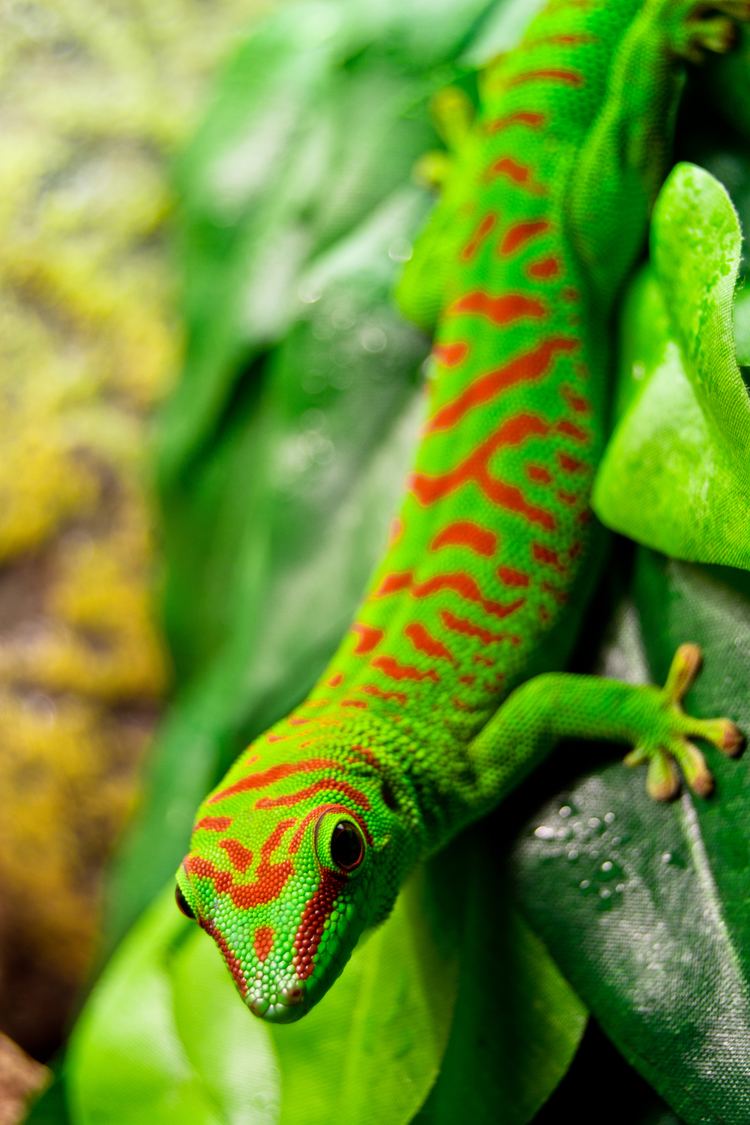Subfamily Gekkoninae Higher classification Gekkoninae Rank Genus | Scientific name Phelsuma Order Scaled reptiles | |
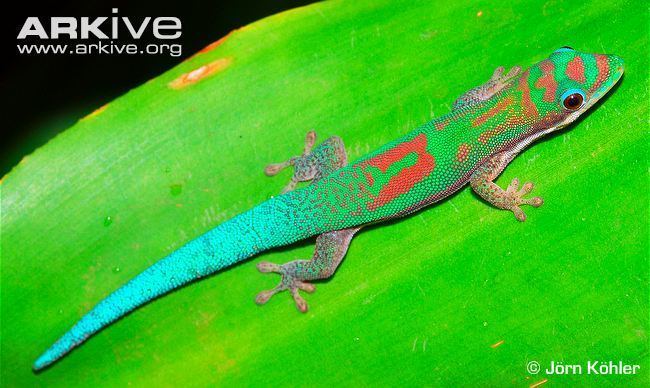 | ||
Lower classifications Phelsuma madagascariensis, Phelsuma grandis, Gold dust day gecko, Yellow‑headed day gecko, Standing's day gecko | ||
Phelsuma grandis
Phelsuma is a large genus of mostly small lizards in the family Gekkonidae. Species in the genus Phelsuma are commonly referred to as day geckos.
Contents
- Phelsuma grandis
- My gold dust day gecko in exo terra terrarium 18x18x24 sri habitat lizards reptile monsoon phelsuma
- Description
- Distribution and habitat
- Diet
- Classification
- References
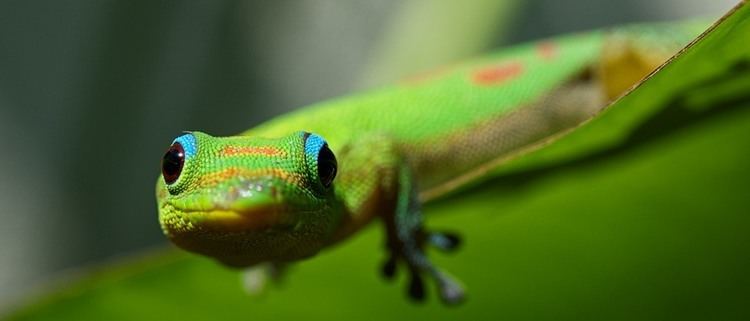
My gold dust day gecko in exo terra terrarium 18x18x24 sri habitat lizards reptile monsoon phelsuma
Description
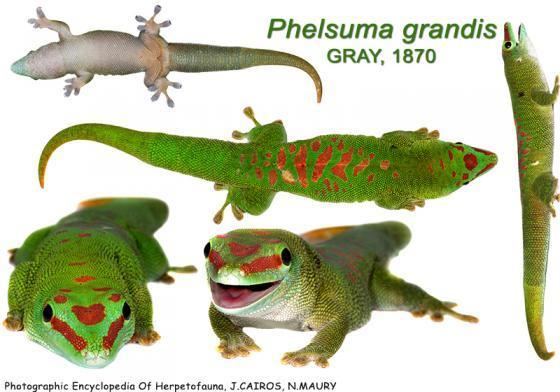
In contrast to most other gecko species, day geckos are active mainly during the day. Other diurnal geckos include species of the genera Lygodactylus and Gonatodes. As with all other geckos, day geckos lack eyelids, having, instead, rounded pupils and a clear, fixed plate covering their eyes which they clean with their tongues. Many species have bright green, red, and blue colors which make them popular terrarium or vivarium pets. These brilliant colors play a role in intraspecies recognition and also serve as camouflage.
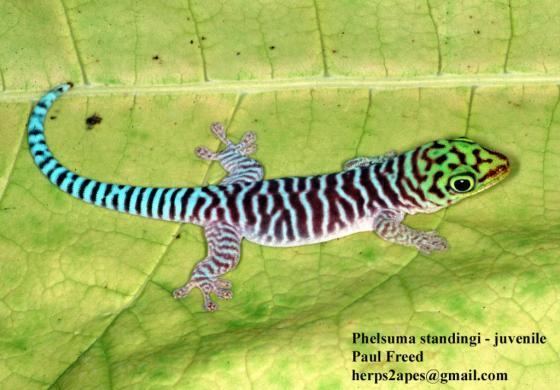
The length of the different Phelsuma species varies between about 6.5 and 30 centimetres (2.6 and 11.8 in), but the extinct Rodrigues giant day gecko was even larger. Day geckos have toe pads consisting of tiny lamellae which allow them to walk on plain vertical and inverted surfaces like bamboo or glass. The inner toe on each foot is vestigial. Males have well-developed femoral pores on the undersurface of their rear limbs. These pores are less developed or absent in females. Females often have well-developed endolymphatic chalk sacs on the sides of their necks. These sacs store calcium, which is needed for egg production. Those eggs can often be seen through the ventral surface of the female's body shortly before they are laid. The hatchlings reach sexual maturity between six and 12 months old. Smaller species may live up to 10 years, whereas the larger species have been reported to live more than 20 years in captivity.
Distribution and habitat
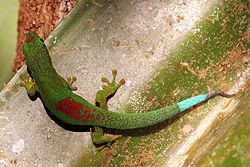
Day geckos inhabit the islands of the south-west part of the Indian Ocean. The exceptions are Phelsuma andamanense, which is endemic to the Andaman Islands in the Bay of Bengal, and Phelsuma dubia, which is also found on the East Coast of mainland Africa, although it possibly was introduced there. Most Phelsumas species are found in Mauritius and Madagascar. Some species are found on neighbouring island groups, including the Mascarenes, Seychelles, and Comoros. Due to human introduction, they are also often found on some of the Hawaiian Islands, including the Big Island and Kauai, and the state of Florida, where they were introduced as a form of pest control. The different Phelsuma species can be found from sea level up to 2,300 meters. Most day geckos are arboreal. They inhabit, amongst others, coconut palms and banana trees, but can also be found near human settlements, in gardens, on fences, houses, and huts. An exception, Phelsuma barbouri, is a terrestrial species.
Diet

Day geckos feed on various insects and other invertebrates in the wild. They also eat nectar, pollen, and occasionally soft, ripe and sweet fruits such as bananas.
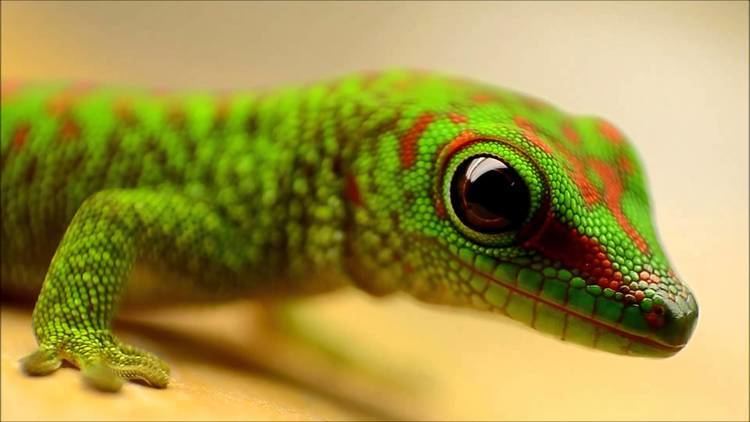
In captivity, such a diet is simulated. Insects which may be used include: (wingless) fruit flies, various flies, wax moths, crickets, small super worms, small butter worms and mealworms. Fruit, which is required a few times a week, may be small pieces of papaya, banana, fruit based baby food, or commercial gecko nectars.
In 2008 a BBC film crew took footage of a day gecko successfully begging a planthopper for honeydew.
Classification
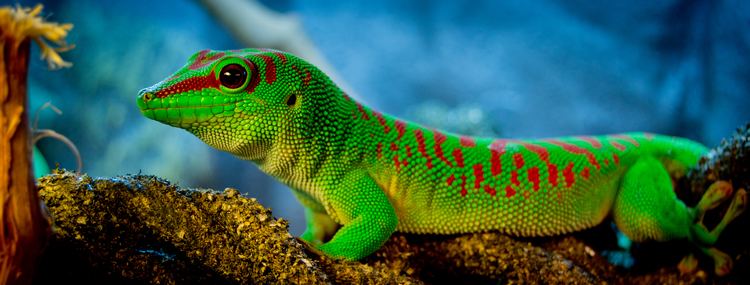
The genus Phelsuma was first described in 1825 by the British zoologist John Edward Gray, who named it after the Dutch physician Murk van Phelsum. The genus consists of about 70 known species and subspecies.

Two Phelsuma species (Phelsuma gigas and Phelsuma edwardnewtoni ) are now considered to be extinct, probably due to the destruction of their environments by human settlers and their domestic animals. Many day gecko species are endangered today because an increasing percentage of their natural habitat, especially tropical forest, is being destroyed by human activity.

